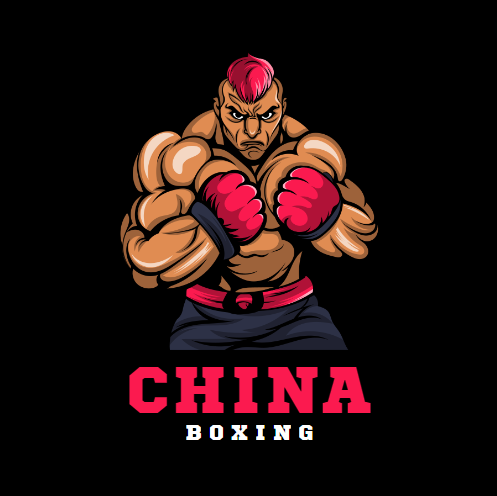**Introduction**
China, known for its rich history and rapid modernization, is making significant strides in a sport traditionally dominated by Western nations: boxing. With its deep-rooted martial arts culture and burgeoning sports infrastructure, China is emerging as a formidable force in the world of boxing. This article explores the evolution, current landscape, and future potential of boxing in China, shedding light on the factors contributing to its rise and the challenges it faces.
**Historical Development**
Boxing in China has a relatively short but dynamic history. While traditional Chinese martial arts such as Kung Fu and Tai Chi have been practiced for centuries, Western-style boxing began gaining traction only in the late 20th century. The turning point came after China’s economic reforms in the late 1970s and early 1980s, which opened the door to greater international engagement, including in sports.
The 2008 Beijing Olympics marked a significant milestone for Chinese boxing. The Chinese government invested heavily in sports infrastructure and athlete development in the lead-up to the games. This investment extended to boxing, leading to increased visibility and support for the sport. As a result, Chinese boxers began to make their mark on the international stage, bringing attention to the country’s boxing potential.
**Key Figures and Achievements**
The rise of boxing in China can be attributed to several key figures who have put the sport on the map. One of the most prominent is Zou Shiming, a former amateur boxer who won gold medals at the 2008 and 2012 Olympics. Zou’s success not only showcased China’s talent but also helped elevate the sport’s profile within the country.
Another notable figure is Zhang Zhilei, a heavyweight boxer who has achieved international acclaim. Zhang’s presence in the professional boxing scene has further solidified China’s reputation as a rising boxing nation. His success in the ring, combined with his marketability, has played a crucial role in promoting the sport to a broader audience.
These athletes, along with others, have helped bridge the gap between traditional Chinese martial arts and Western boxing. Their achievements have inspired a new generation of boxers and contributed to the growing popularity of the sport.
**Development of Boxing Infrastructure**
China’s commitment to developing boxing as a major sport is evident in its investment in infrastructure and training facilities. The establishment of professional boxing organizations and training centers has been a key factor in the sport’s growth.
The China Professional Boxing Association (CPBA), founded in 2008, has been instrumental in organizing professional boxing events and promoting local talent. The CPBA’s efforts have helped create a structured competitive environment for boxers and have contributed to the sport’s visibility in China.
Training facilities such as the Beijing Boxing Club and Shanghai Boxing Academy have become hubs for aspiring boxers. These centers offer state-of-the-art equipment, experienced coaches, and rigorous training programs. The emphasis on combining modern sports science with traditional techniques has proven effective in developing high-caliber athletes.
**Cultural Impact and Popularity**
Boxing’s rise in China is not just a result of infrastructure and investment but also a reflection of changing cultural attitudes. Historically, Chinese sports culture has been dominated by traditional martial arts and sports like table tennis and badminton. However, the growing influence of Western media and the success of Chinese athletes in international competitions have helped shift perceptions.
Boxing matches featuring Chinese fighters have gained significant media attention, drawing large audiences and increasing the sport’s popularity. The success of high-profile athletes like Zou Shiming and Zhang Zhilei has further fueled interest, inspiring many young people to take up boxing.
The sport’s portrayal in media and entertainment has also played a role in shaping public perception. Boxing’s dramatic and competitive nature has resonated with audiences, leading to a broader acceptance of the sport within Chinese culture.
**Challenges and Opportunities**
Despite its growth, boxing in China faces several challenges. One of the primary hurdles is the competition with traditional martial arts, which have a deep cultural significance in China. While boxing is gaining popularity, it must contend with the entrenched status of martial arts like Kung Fu and Tai Chi.
Another challenge is the need for more comprehensive support systems for athletes. Although progress has been made, there is still room for improvement in areas such as sports medicine, athlete management, and career development. Addressing these needs will be crucial for sustaining the growth of boxing in China.
However, these challenges also present opportunities. The growing interest in combat sports, including mixed martial arts (MMA), has created a favorable environment for boxing. The crossover appeal of MMA has introduced more people to various combat sports, including boxing, and has helped expand the sport’s fan base.
Additionally, China’s increasing investment in sports infrastructure and international partnerships offers promising prospects for boxing. Collaborations with established boxing organizations and participation in global events can enhance China’s standing in the sport and provide valuable experience for its athletes.
**Looking Forward**
The future of boxing in China appears bright, with continued investment and support likely to drive further growth. The country’s focus on sports development and the increasing popularity of combat sports provide a solid foundation for the sport’s advancement.
Chinese boxing is poised to make a significant impact on the international stage, with the potential to produce world-class athletes and attract global attention. As the sport continues to evolve, it will undoubtedly play a key role in China’s broader sports landscape.
**Conclusion**
Boxing in China has come a long way from its early days, evolving into a dynamic and rapidly growing sport. The rise of key athletes, the development of infrastructure, and the shifting cultural landscape have all contributed to the sport’s growing popularity. While challenges remain, the opportunities for growth and success are significant. As China continues to invest in and support boxing, the sport is set to become a major player on the global stage, showcasing the country’s athletic talent and passion for competition.
